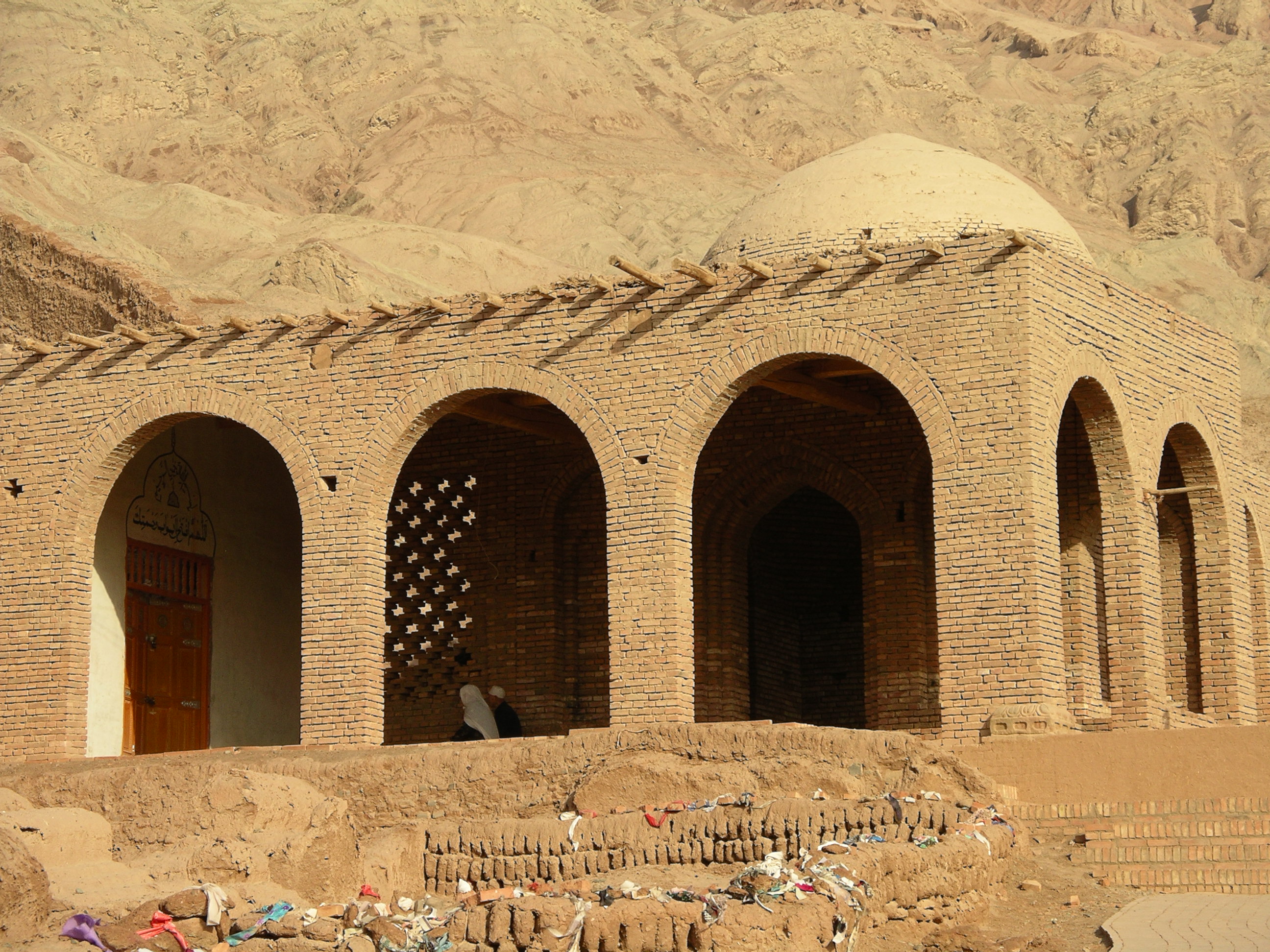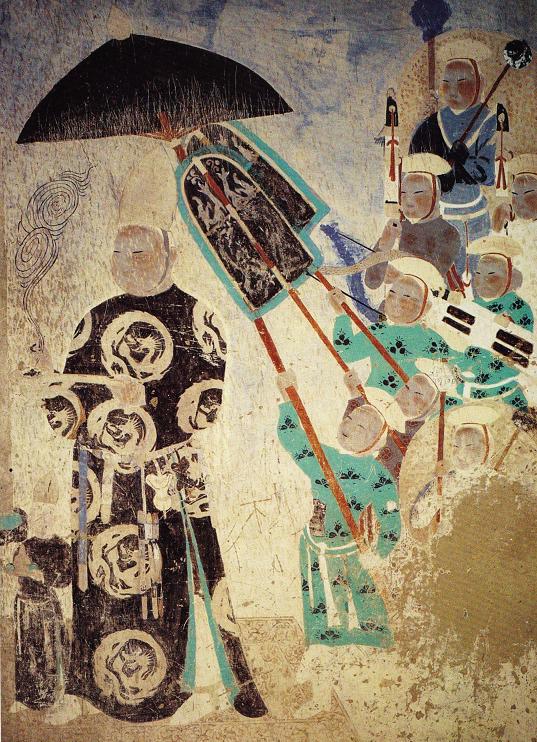|
Tuyugou Valley
Tuyoq or Tuyugou or Tuyuk () is an ancient oasis-village in the Taklamakan desert, 70 km east of Turpan in Shanshan County in a lush valley cutting into the Flaming Mountains, with a well preserved Uyghur people, Uyghur orientation, and few tourists. It is famous for its seedless grapes and a number of ancient Buddhist meditation caves nearby containing frescos.Bonavia (2004), pp. 241-242. Coordinates: 42.858519, 89.691976 Footnotes References * Bonavia, Judy (2004). ''The Silk Road: Xi'an to Kashgar''. Revised by Christoph Baumer. Odyssey Guides. Hong Kong. . Oases of China Turpan Villages in China {{Xinjiang-geo-stub ... [...More Info...] [...Related Items...] OR: [Wikipedia] [Google] [Baidu] |
Oasis
In ecology, an oasis (; ) is a fertile area of a desert or semi-desert environment'ksar''with its surrounding feeding source, the palm grove, within a relational and circulatory nomadic system.” The location of oases has been of critical importance for trade and transportation routes in desert areas; caravans must travel via oases so that supplies of water and food can be replenished. Thus, political or military control of an oasis has in many cases meant control of trade on a particular route. For example, the oases of Awjila, Ghadames and Kufra, situated in modern-day Libya, have at various times been vital to both north–south and east–west Trans-Saharan trade, trade in the Sahara Desert. The location of oases also informed the Darb El Arba'īn trade route from Sudan to Egypt, as well as the caravan route from the Niger River to Tangier, Morocco. The Silk Road “traced its course from water hole to water hole, relying on oasis communities such as Turpan in China and Sam ... [...More Info...] [...Related Items...] OR: [Wikipedia] [Google] [Baidu] |
Taklamakan Desert
The Taklimakan or Taklamakan Desert (; zh, s=塔克拉玛干沙漠, p=Tǎkèlāmǎgān Shāmò, Xiao'erjing: , dng, Такәламаган Шамә; ug, تەكلىماكان قۇملۇقى, Täklimakan qumluqi; also spelled Taklimakan and Teklimakan) is a desert in Southwestern Xinjiang in Northwest China. It is bounded by the Kunlun Mountains to the south, the Pamir Mountains to the west, the Tian Shan range to the north, and the Gobi Desert to the east. Etymology While most researchers agree on being the Persian word for "place", etymology of ''Takla'' is less clear. The word may be a Uyghur borrowing of the Persian , "to leave alone/out/behind, relinquish, abandon" + ''makan''. Another plausible explanation suggests it is derived from Turki ''taqlar makan'', describing "the place of ruins". Chinese scholars Wang Guowei and Huang Wenbi linked the name to the Tocharians, a historical people of the Tarim Basin, making the meaning of "Taklamakan" similar to "Tocharistan". A ... [...More Info...] [...Related Items...] OR: [Wikipedia] [Google] [Baidu] |
Turpan
Turpan (also known as Turfan or Tulufan, , ug, تۇرپان) is a prefecture-level city located in the east of the autonomous region of Xinjiang, China. It has an area of and a population of 632,000 (2015). Geonyms The original name of the city is unknown. The form Turfan (while it is older than Turpan), was not used until the middle of the 2nd millennium CE and its use became widespread only in the post-Mongol period. Historically, many settlements in the Tarim Basin have been given a number of different names. Some of these names have also referred to more than one place: Turpan/Turfan/Tulufan is one such example. Others include Jushi/Gushi, Gaochang/Qocho/Karakhoja and Jiaohe/Yarkhoto. The center of the region has shifted a number of times, from Yar-Khoto (Jiaohe, to the west of modern Turpan) to Qocho (Gaochang, to the southeast of Turpan) and to Turpan itself. History Turpan has long been the centre of a fertile oasis (with water provided by the ''karez'' canal sy ... [...More Info...] [...Related Items...] OR: [Wikipedia] [Google] [Baidu] |
Shanshan County
Shanshan County () as the official romanized name, also transliterated from Uyghur as Piqan County (; ), is a county within the Xinjiang Uyghur Autonomous Region and is under the administrative jurisdiction of the prefecture-level city of Turpan. It contains an area of , occupying the eastern majority of Turpan. According to the 2002 census, it has a population of . The county seat is in Shanshan Town. Name The county is named after the ancient Shanshan Kingdom, although the kingdom was actually located mostly outside of the borders of the modern county, in the Lop Nur area. The place was originally named Piqian, and the Grand coordinator and provincial governor of Xinjiang proposed the name of Shanshan when Guangxu Emperor decided to set up a county in 1902. History The local geology and the desert climate made it possible to discover a number of important fossil sites in the area, including China's largest cluster of fossilized dinosaur tracks and China's largest dinosaur. Im ... [...More Info...] [...Related Items...] OR: [Wikipedia] [Google] [Baidu] |
Flaming Mountains
The Flaming Mountains () or Huoyan Mountains, are barren, eroded, red sandstone hills in the Tian Shan of Xinjiang. They lie near the northern rim of the Taklamakan Desert and east of the city of Turpan. Their striking gullies and trenches caused by erosion of the red sandstone bedrock give the mountains a flaming appearance at certain times of the day. The mountains are approximately long and wide, crossing the Turpan Depression from east to west. The average height of the Flaming Mountains is , with some peaks reaching over . The mountain climate is harsh and the extremely high summer temperatures make this the hottest spot in China, frequently reaching or higher. One of the largest thermometers in China is on display adjacent to the mountain, tracking the surrounding ground temperatures. It is a popular tourist spot. A number of important palaeontological remains have been found in the area, see e.g. Lianmuqin Formation and Subashi Formation. Silk route In ancient times, t ... [...More Info...] [...Related Items...] OR: [Wikipedia] [Google] [Baidu] |
Uyghur People
The Uyghurs; ; ; ; zh, s=, t=, p=Wéiwú'ěr, IPA: ( ), alternatively spelled Uighurs, Uygurs or Uigurs, are a Turkic ethnic group originating from and culturally affiliated with the general region of Central Asia, Central and East Asia. The Uyghurs are recognized as native to the Xinjiang Uyghur Autonomous Region in Northwest China. They are one of Ethnic minorities in China, China's 55 officially recognized ethnic minorities. The Uyghurs are recognized by the Government of China, Chinese government as a Regional language, regional minority and the Titular nation, titular people of Xinjiang. The Uyghurs have traditionally inhabited a series of Oasis, oases scattered across the Taklamakan Desert within the Tarim Basin. These oases have historically existed as independent states or were controlled by many civilizations including History of China, China, the Mongol Empire, Mongols, the Tibetan Empire, Tibetans and various List of Turkic dynasties and countries, Turkic po ... [...More Info...] [...Related Items...] OR: [Wikipedia] [Google] [Baidu] |
Mosque In Tuyoq 01
A mosque (; from ar, مَسْجِد, masjid, ; literally "place of ritual prostration"), also called masjid, is a place of prayer for Muslims. Mosques are usually covered buildings, but can be any place where prayers (sujud) are performed, including outdoor courtyards. The first mosques were simple places of prayer for Muslims, and may have been open spaces rather than buildings. In the first stage of Islamic architecture, 650-750 CE, early mosques comprised open and closed covered spaces enclosed by walls, often with minarets from which calls to prayer were issued. Mosque buildings typically contain an ornamental niche (''mihrab'') set into the wall that indicates the direction of Mecca (''qiblah''), ablution facilities. The pulpit (''minbar''), from which the Friday (jumu'ah) sermon (''khutba'') is delivered, was in earlier times characteristic of the central city mosque, but has since become common in smaller mosques. Mosques typically have segregated spaces for men and w ... [...More Info...] [...Related Items...] OR: [Wikipedia] [Google] [Baidu] |
Christoph Baumer
Christoph Baumer (born June 23, 1952) is a Swiss explorer and historian of Central Asia. From 1984 onwards, he has conducted explorations in Central Asia, China, Tibet and the Caucasus, the results of which have been published in numerous books, scholarly publications, TV and radio programs. Life Baumer grew up in the Swiss Canton of Thurgau. His father was a businessman; his mother had been a war correspondent for the French national press agency and reported during the Finnish-Russian war in the winter of 1939–1940. Sven Hedin, the renowned explorer of Asia, aided her return to occupied Belgium, at that time her home. As an adolescent, Baumer was already fascinated by the travel reports of Hedin, and these likely laid the foundation for Baumer’s later development. After obtaining a PhD at the University of Zurich, he first worked in business till he became a freelance author and photographer with emphasis on the cultural history of Central Asia and the Caucasus. His ... [...More Info...] [...Related Items...] OR: [Wikipedia] [Google] [Baidu] |
Oases Of China
In ecology, an oasis (; ) is a fertile area of a desert or semi-desert environmentBattesti, Vincent (2005) Jardins au désert: Évolution des pratiques et savoirs oasiens: Jérid tunisien. Paris: IRD éditions. . that sustains plant life and provides habitat for animals. Surface water may be present, or water may only be accessible from wells or underground channels created by humans. In geography, an oasis may be a current or past rest stop on a transportation route, or less-than-verdant location that nonetheless provides access to underground water through deep wells created and maintained by humans. The word ''oasis'' came into English from la, oasis, from grc, ὄασις, , which in turn is a direct borrowing from ... [...More Info...] [...Related Items...] OR: [Wikipedia] [Google] [Baidu] |

.jpg)





